Abstract
Infection of Escherichia coli by bacteriophage D108 was shown to result in the generation of apparently random chromosomal mutations. Approximately 1% of the cells lysogenized by D108, as with Mu, acquired new auxotrophic mutations. D108-induced mutations were nonreverting and were most probably the result of insertion of the D108 genome into regions of genetic function. D108 and Mu shared many similar properties but were heteroimmune and had different host ranges. Lytic infections of Mu lysogens with D108 and D108 lysogens with Mu resulted in 100-fold increases in release of phage with prophage markers over those due to spontaneous induction. Phenotypic mixing was common, with most phage carrying the prophage immunity being packaged in particles with the host range of the superinfecting phage. A fraction of the superinfecting phage genomes were, however, packaged in particles with the prophage-specified host range. Although 10% of the prophage progeny were D108-Mu genetic hybrids, superinfecting phage-induced release of the prophage with reciprocal phenotypic mixing occurred in recA hosts, in which the frequency of D108-Mu genetic hybrids was reduced 100-fold.
Full text
PDF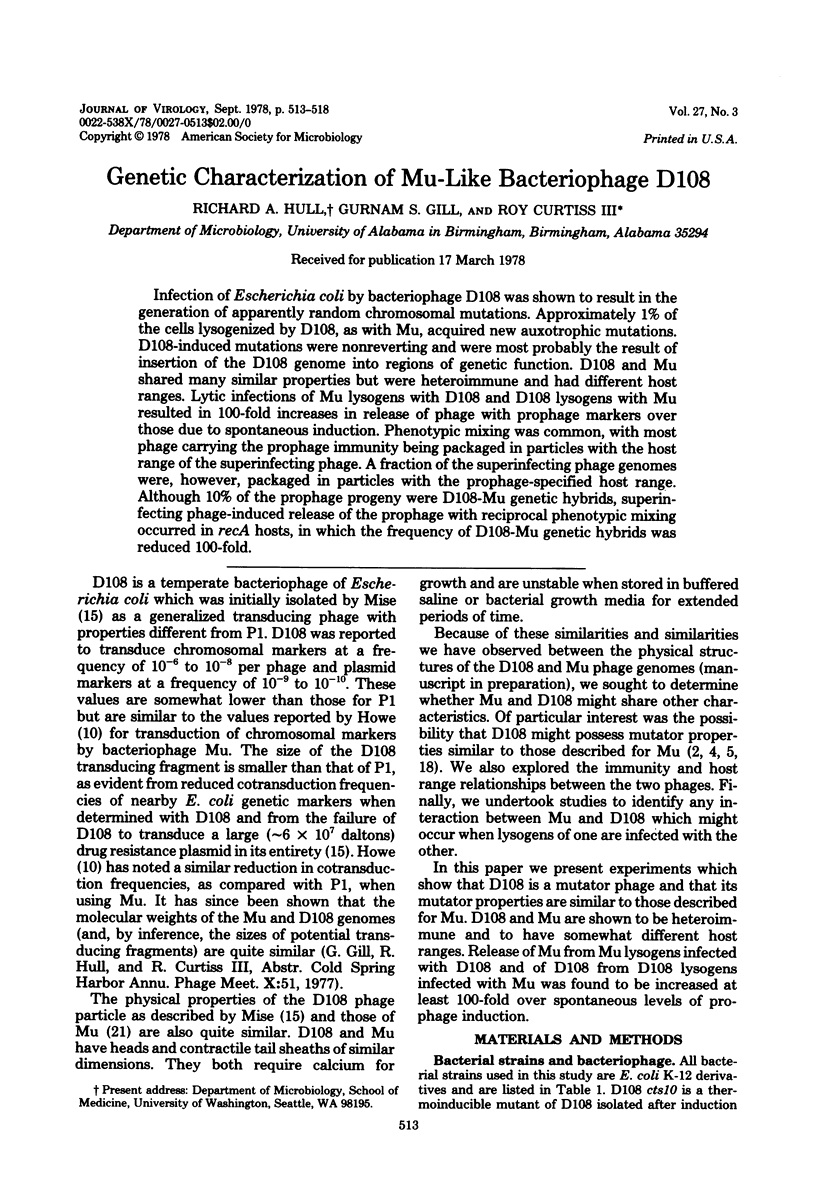
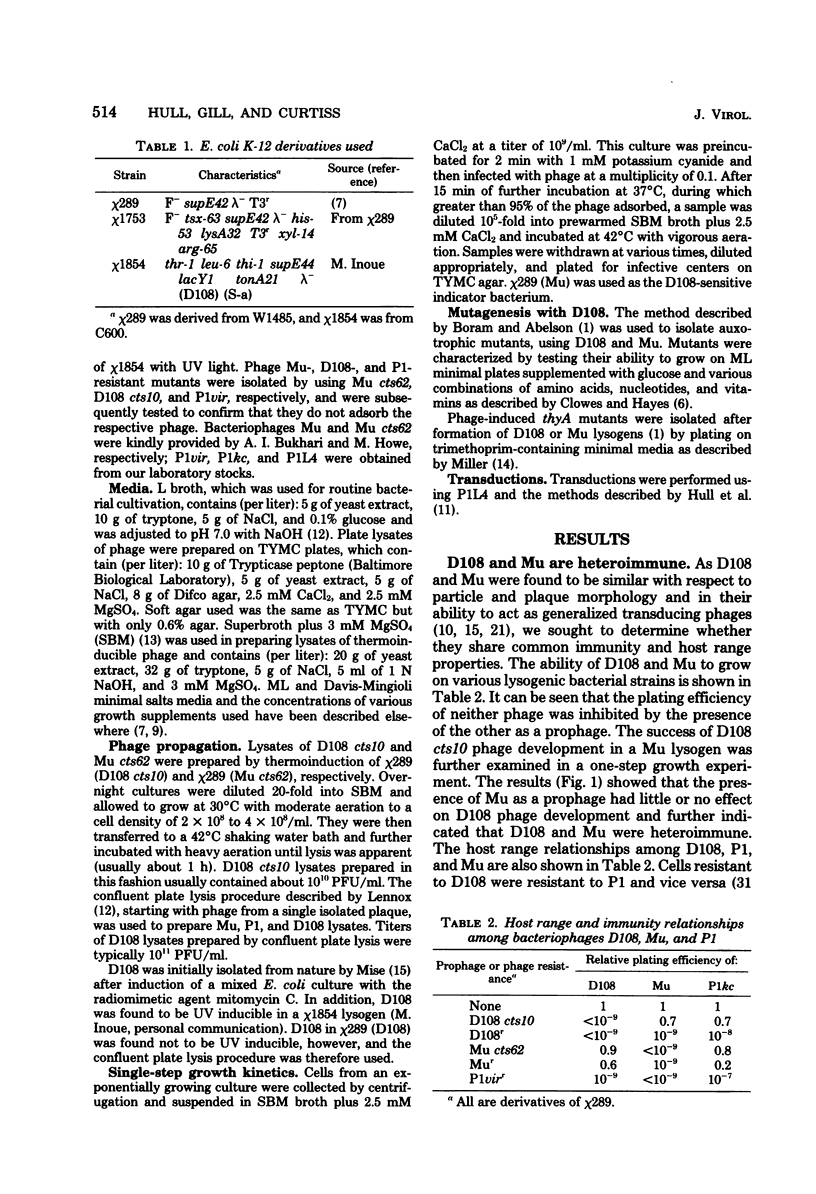
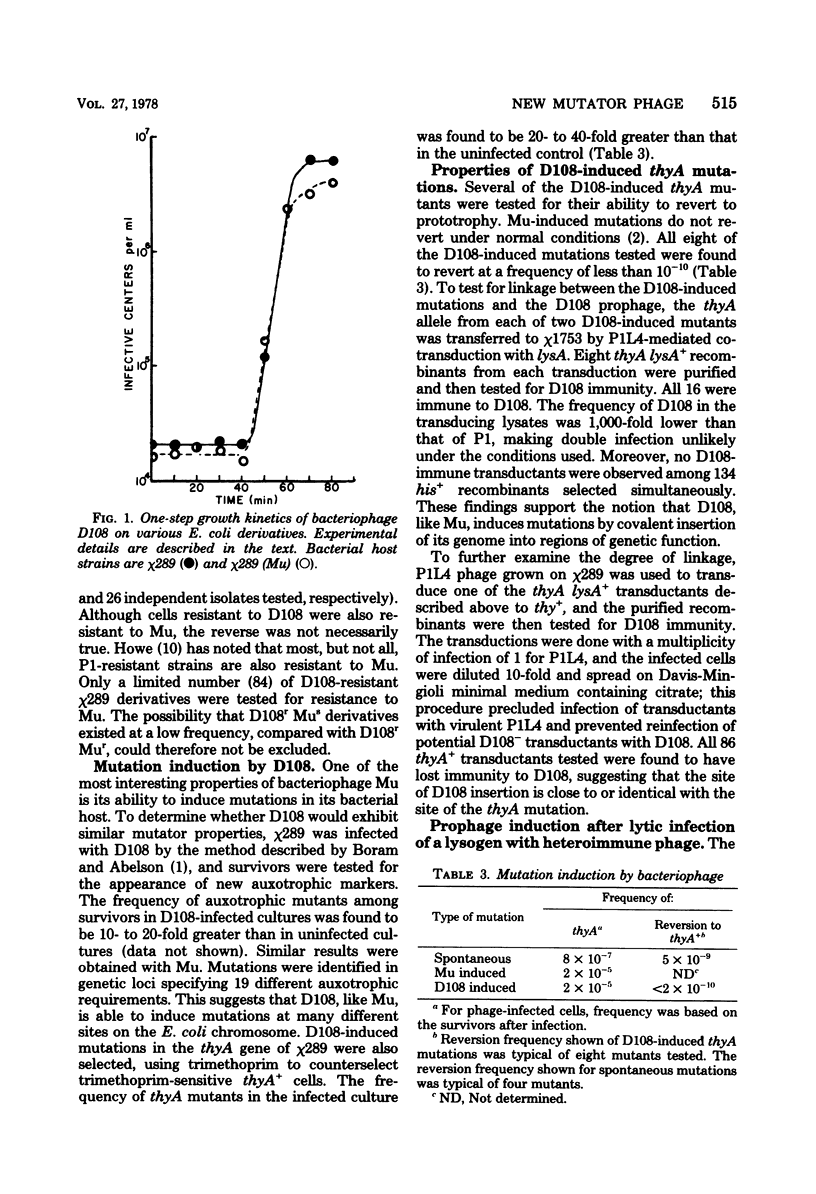
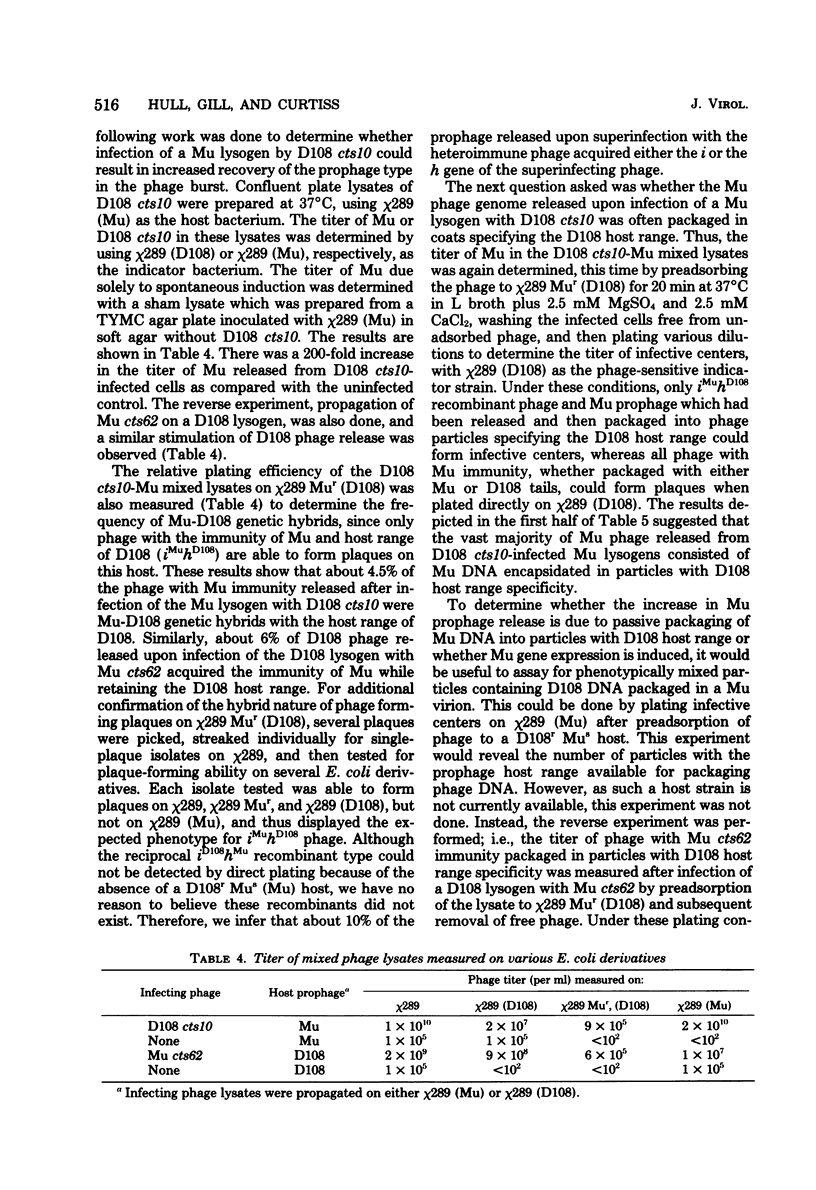
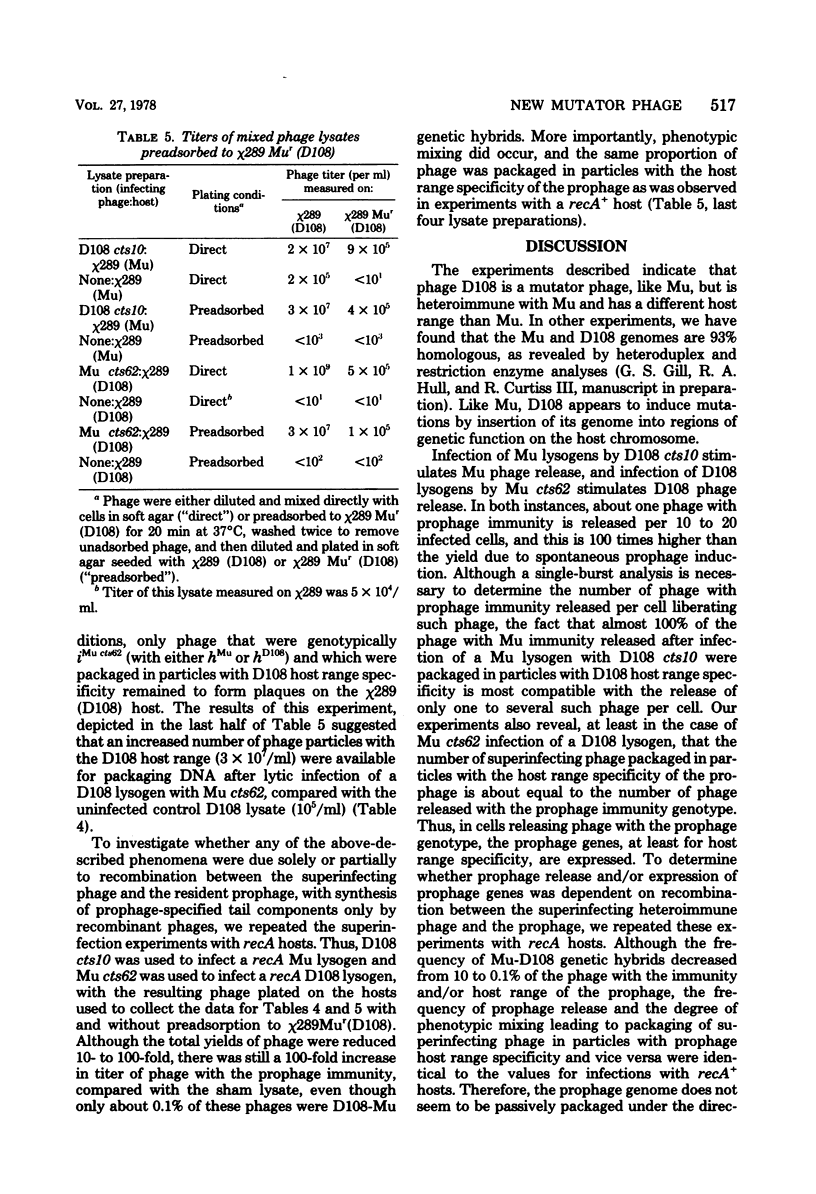
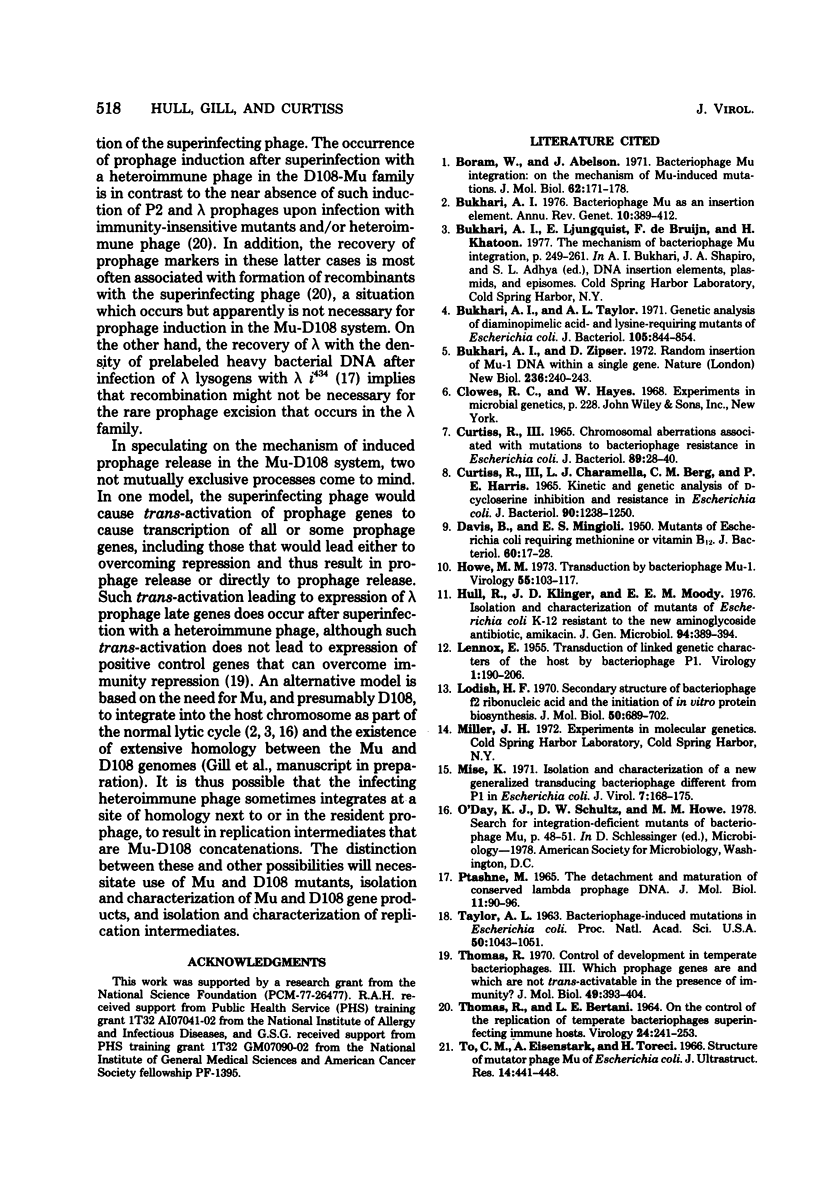
Selected References
These references are in PubMed. This may not be the complete list of references from this article.
- Boram W., Abelson J. Bacteriophage Mu integration: on the mechanism of Mu-induced mutations. J Mol Biol. 1971 Nov 28;62(1):171–178. doi: 10.1016/0022-2836(71)90137-9. [DOI] [PubMed] [Google Scholar]
- Bukhari A. I. Bacteriophage mu as a transposition element. Annu Rev Genet. 1976;10:389–412. doi: 10.1146/annurev.ge.10.120176.002133. [DOI] [PubMed] [Google Scholar]
- Bukhari A. I., Taylor A. L. Genetic analysis of diaminopimelic acid- and lysine-requiring mutants of Escherichia coli. J Bacteriol. 1971 Mar;105(3):844–854. doi: 10.1128/jb.105.3.844-854.1971. [DOI] [PMC free article] [PubMed] [Google Scholar]
- Curtiss R., 3rd, Charamella L. J., Berg C. M., Harris P. E. Kinetic and genetic analyses of D-cycloserine inhibition and resistance in Escherichia coli. J Bacteriol. 1965 Nov;90(5):1238–1250. doi: 10.1128/jb.90.5.1238-1250.1965. [DOI] [PMC free article] [PubMed] [Google Scholar]
- DAVIS B. D., MINGIOLI E. S. Mutants of Escherichia coli requiring methionine or vitamin B12. J Bacteriol. 1950 Jul;60(1):17–28. doi: 10.1128/jb.60.1.17-28.1950. [DOI] [PMC free article] [PubMed] [Google Scholar]
- Howe M. M. Transduction by bacteriophage MU-1. Virology. 1973 Sep;55(1):103–117. doi: 10.1016/s0042-6822(73)81012-8. [DOI] [PubMed] [Google Scholar]
- Hull R., Klinger J. D., Moody E. E. Isolation and characterization of mutants of Escherichia coli K12 resistant to the new aminoglycoside antibiotic, amikacin. J Gen Microbiol. 1976 Jun;94(2):389–394. doi: 10.1099/00221287-94-2-389. [DOI] [PubMed] [Google Scholar]
- LENNOX E. S. Transduction of linked genetic characters of the host by bacteriophage P1. Virology. 1955 Jul;1(2):190–206. doi: 10.1016/0042-6822(55)90016-7. [DOI] [PubMed] [Google Scholar]
- Lodish H. F. Secondary structure of bacteriophage f2 ribonucleic acid and the initiation of in vitro protein biosynthesis. J Mol Biol. 1970 Jun 28;50(3):689–702. doi: 10.1016/0022-2836(70)90093-8. [DOI] [PubMed] [Google Scholar]
- Mise K. Isolation and characterization of a new generalized transducing bacteriophage different from P1 in Escherichia coli. J Virol. 1971 Jan;7(1):168–175. doi: 10.1128/jvi.7.1.168-175.1971. [DOI] [PMC free article] [PubMed] [Google Scholar]
- PTASHNE M. THE DETACHMENT AND MATURATION OF CONSERVED LAMBDA PROPHAGE DNA. J Mol Biol. 1965 Jan;11:90–96. doi: 10.1016/s0022-2836(65)80174-7. [DOI] [PubMed] [Google Scholar]
- TAYLOR A. L. BACTERIOPHAGE-INDUCED MUTATION IN ESCHERICHIA COLI. Proc Natl Acad Sci U S A. 1963 Dec;50:1043–1051. doi: 10.1073/pnas.50.6.1043. [DOI] [PMC free article] [PubMed] [Google Scholar]
- THOMAS R., BERTANI L. E. ON THE CONTROL OF THE REPLICATION OF TEMPERATE BACTERIOPHAGES SUPERINFECTING IMMUNE HOSTS. Virology. 1964 Nov;24:241–253. doi: 10.1016/0042-6822(64)90163-1. [DOI] [PubMed] [Google Scholar]
- Thomas R. Control of development in temperate bacteriophages. 3. Which prophage genes are and which are not trans-activable in the presence of immunity? J Mol Biol. 1970 Apr 28;49(2):393–404. doi: 10.1016/0022-2836(70)90252-4. [DOI] [PubMed] [Google Scholar]
- To C. M., Eisenstark A., Töreci H. Structure of mutator phage Mu1 of Escherichia coli. J Ultrastruct Res. 1966 Mar;14(5):441–448. doi: 10.1016/s0022-5320(66)80074-6. [DOI] [PubMed] [Google Scholar]


